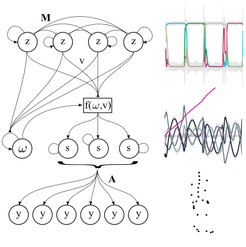Perceptual Decision Making

Perceptual decision making is the process of deciding the identity of a stimulus, typically between a fixed number of possible alternatives. Based on many experiments with humans and monkeys, it has been suggested that the brain accumulates noisy pieces of evidence during perceptual decision making until a bound is reached and a response indicating the decision is initiated [1]. This understanding of perceptual decision making as bounded accumulation of evidence is based on statistically optimal procedures for making most accurate decisions in a given amount of time based on a sequence of noisy pieces of information [1,2]. Most models of perceptual decision making abstract from this underlying probabilistic perspective and concentrate on a mechanistic description of bounded accumulation. We, however, believe that the probabilistic perspective can add valuable insights into the processes underlying perceptual decisions [3]. Most importantly, they allow us to investigate how changes in the presented stimulus affect perceptual decisions. These changes may be complete switches in presented stimuli (see figure above), but also complex, steady movements, or short perturbations.
[1] Gold, J. I. & Shadlen, M. N. (2007) The neural basis of decision making. Annu Rev Neurosci, 30, 535-574
[2] Bogacz, R.; Brown, E.; Moehlis, J.; Holmes, P. & Cohen, J. D. (2006) The physics of optimal decision making: a formal analysis of models of performance in two-alternative forced-choice tasks. Psychol Rev, 113(4), 700-765
[3] Bitzer, S.; Park, H.; Blankenburg, F. & Kiebel, S. J. (2014) Perceptual decision making: Drift-diffusion model is equivalent to a Bayesian model Frontiers in Human Neuroscience, 2014, 8(102)
